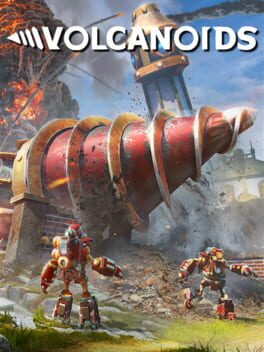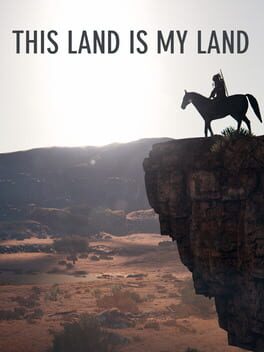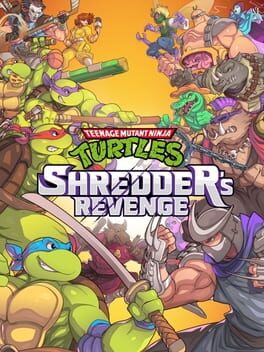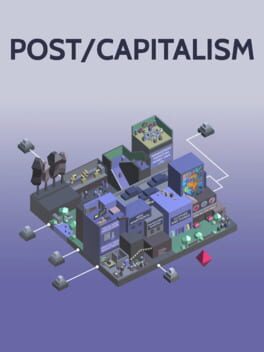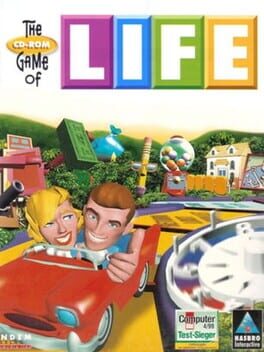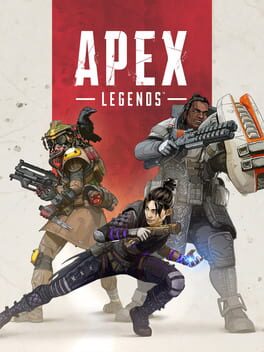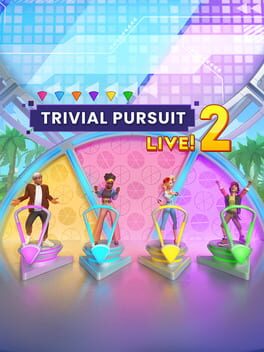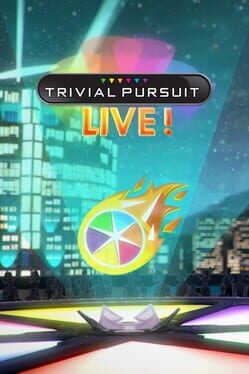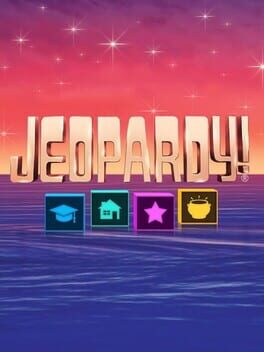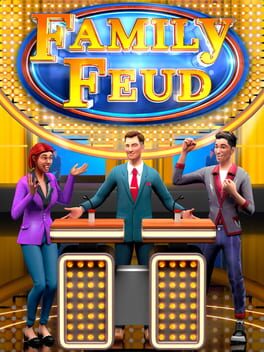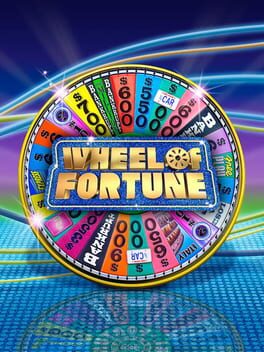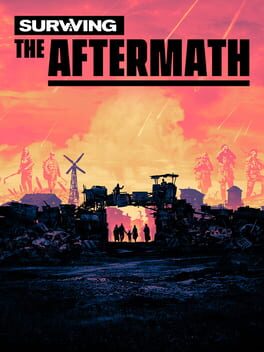astarrgames
2019
As soon as I launched this game, I was immediately concerned I installed a generic, asset-flipped task simulator. The high-definition polygonal landscape, buildings and equipment seemed that way.
Digging deeper (pun), it's actually a pretty unique and well-constructed base-builder FPS in early access with some jankyness. I was reminded more of the time I enjoyed The Signal From Tölva, with some caveats.
From an economy-simulator perspective, this is incredibly shallow (pun). All the manufacturing in this game follows a simple: level 1 mineral and level 1 ore make level 1 equipment, upgrades and devices. This goes up to level 3, and the equipment and enemy encounters scale each time in somewhat interesting ways.
I played this game in solo, and a lot of the FPS aspects were very difficult, even on one of the lowest difficulties. The scaling of difficulty is kind of interesting because new weapons and enemy types are introduced, but the final stages depend heavily on throwing dozens of enemies in waves while trying to meet objectives.
There's some minor bugs that weren't too intrusive but worth mentioning. For example, hitboxes on enemies and landscapes sometimes didn't really add up sometimes, and the weapons and some movement over hills feel kind of clunky and sticky.
I could see myself really enjoying this more if I had played cooperative with some friends, running around a base doing repairs while others collect resources or organize a raid on an enemy base. I've played a lot of Deep Rock Galactic, which has a lot of similarities with this, and I would recommend that more for a cooperative miner-shooter.
While it has been in early access for 4 years with frequent and significant updates from what I can see, I don't know what it would need for me to be excited and revisit the game at release. It is a pretty unique concept and looks actually decent, but it doesn't really satisfy me as either a simulator or shooter.
Digging deeper (pun), it's actually a pretty unique and well-constructed base-builder FPS in early access with some jankyness. I was reminded more of the time I enjoyed The Signal From Tölva, with some caveats.
From an economy-simulator perspective, this is incredibly shallow (pun). All the manufacturing in this game follows a simple: level 1 mineral and level 1 ore make level 1 equipment, upgrades and devices. This goes up to level 3, and the equipment and enemy encounters scale each time in somewhat interesting ways.
I played this game in solo, and a lot of the FPS aspects were very difficult, even on one of the lowest difficulties. The scaling of difficulty is kind of interesting because new weapons and enemy types are introduced, but the final stages depend heavily on throwing dozens of enemies in waves while trying to meet objectives.
There's some minor bugs that weren't too intrusive but worth mentioning. For example, hitboxes on enemies and landscapes sometimes didn't really add up sometimes, and the weapons and some movement over hills feel kind of clunky and sticky.
I could see myself really enjoying this more if I had played cooperative with some friends, running around a base doing repairs while others collect resources or organize a raid on an enemy base. I've played a lot of Deep Rock Galactic, which has a lot of similarities with this, and I would recommend that more for a cooperative miner-shooter.
While it has been in early access for 4 years with frequent and significant updates from what I can see, I don't know what it would need for me to be excited and revisit the game at release. It is a pretty unique concept and looks actually decent, but it doesn't really satisfy me as either a simulator or shooter.
2019
There's no other reviews so I'm posting a work-in-progress collection of thoughts on the game. I'm a settler on unceded Indigenous territory on Turtle Island from British ancestry, and highly recommend reading the writing of Baylee Giroux of Waypoint on the game ahead of mine.
This is a game developed by a European team about a fictitious and unnamed Indigenous tribe's resistance to American expansion in the western frontier. It seems like a weak adaptation of Bury My Heart at Wounded Knee with specific focus on strategic combat in line with the developers' previous work on American navy and historical war games. It's a revenge power fantasy, which initially drew me to the game, but with a monolithic perspective of Indigenous struggles.
The game mechanics themselves are fun, while somewhat buggy. This falls somewhere between a Far Cry 2 and Red Dead Redemption without any dialogue or story beyond playing a chief preventing western expansion. The core loop of the game will be the third-person action of approaching a settler camp using various stealth and distraction tactics, picking off colonialists, and then looting and burning that settlement. This is pretty fun, with the exception of some of those bugs (or features) interrupting this style of gameplay. Often I would consider myself hidden in a bush at night, and a settler would easily point me out, and other times I would be laying in tall grass during the day and have settlers walk past me. Occasionally I'll walk or ride my horse past a tree, only to immediately climb the tree and take fall damage returning the the ground. I've also had the bad experience of being in stealth and having a patrol spawn behind me.
The UI is a mess, but I can't imagine how it can be improved. Selecting camps, crafting, moving and setting orders are spread out on a menu or buried between submenus. It's not as convoluted as something like Stellaris or Hearts of Iron, but it is overwhelming on first glance. This layer also offers the strategy part of the game, which has live events occurring, like gatherers from enemy settlements encroaching on your own. It's interesting and impressive, but simultaneous management of the third-person action and this layer is both difficult and confusing. Often times I send a band of warriors that seem to be of higher level than their enemies and equip them with high quality weapons - only to see a notification that they've died and my settlement was lost. It's confusing and I believe it's because I'm missing information, particularly how many settlers are gathering and what level my warriors are.
The social community is fairly split between fascists using racial slurs in chat who beg to play as European settlers to people who identify with and are excited by Indigenous resistance. Joining their Discord was a huge mistake, as the community management and any public relations pushed out a lot of the Indigenous and anti-racist voices to benefit alt-right Twitter influencers (who didn't even stick around). Besides the chat, the in-game social aspect of the game is almost strictly economic: you trade with other players for the online-only currency and sometimes recover the dropped items of other players killed in their own game instance. However, the online economy adds an odd and unfair advantage in the game, as the top-tier items or necessities to level up settlements are sold for cheap. It makes it possible to completely skip large expanses of the game, such as crafting, gathering, hunting, fishing and skinning.
The loop is incredibly engaging, but due to the stealth-action being finicky, I'm often spending much too long hiding in bushes, running away from a settlement that spotted me then waiting on enemy patterns to reset.
Edit: The game has apparently been abandoned by its development team. The game has problems with working offline and may eventually be unplayable if this continues. I stick by my original criticism and with this news, I highly recommend avoiding it.
Solidarity with the Anishinaabe & Ojibwe nations at Grassy Narrows, who are resisting mining developments on their land by the illegitimate provincial government of Ontario, Canada.
This is a game developed by a European team about a fictitious and unnamed Indigenous tribe's resistance to American expansion in the western frontier. It seems like a weak adaptation of Bury My Heart at Wounded Knee with specific focus on strategic combat in line with the developers' previous work on American navy and historical war games. It's a revenge power fantasy, which initially drew me to the game, but with a monolithic perspective of Indigenous struggles.
The game mechanics themselves are fun, while somewhat buggy. This falls somewhere between a Far Cry 2 and Red Dead Redemption without any dialogue or story beyond playing a chief preventing western expansion. The core loop of the game will be the third-person action of approaching a settler camp using various stealth and distraction tactics, picking off colonialists, and then looting and burning that settlement. This is pretty fun, with the exception of some of those bugs (or features) interrupting this style of gameplay. Often I would consider myself hidden in a bush at night, and a settler would easily point me out, and other times I would be laying in tall grass during the day and have settlers walk past me. Occasionally I'll walk or ride my horse past a tree, only to immediately climb the tree and take fall damage returning the the ground. I've also had the bad experience of being in stealth and having a patrol spawn behind me.
The UI is a mess, but I can't imagine how it can be improved. Selecting camps, crafting, moving and setting orders are spread out on a menu or buried between submenus. It's not as convoluted as something like Stellaris or Hearts of Iron, but it is overwhelming on first glance. This layer also offers the strategy part of the game, which has live events occurring, like gatherers from enemy settlements encroaching on your own. It's interesting and impressive, but simultaneous management of the third-person action and this layer is both difficult and confusing. Often times I send a band of warriors that seem to be of higher level than their enemies and equip them with high quality weapons - only to see a notification that they've died and my settlement was lost. It's confusing and I believe it's because I'm missing information, particularly how many settlers are gathering and what level my warriors are.
The social community is fairly split between fascists using racial slurs in chat who beg to play as European settlers to people who identify with and are excited by Indigenous resistance. Joining their Discord was a huge mistake, as the community management and any public relations pushed out a lot of the Indigenous and anti-racist voices to benefit alt-right Twitter influencers (who didn't even stick around). Besides the chat, the in-game social aspect of the game is almost strictly economic: you trade with other players for the online-only currency and sometimes recover the dropped items of other players killed in their own game instance. However, the online economy adds an odd and unfair advantage in the game, as the top-tier items or necessities to level up settlements are sold for cheap. It makes it possible to completely skip large expanses of the game, such as crafting, gathering, hunting, fishing and skinning.
The loop is incredibly engaging, but due to the stealth-action being finicky, I'm often spending much too long hiding in bushes, running away from a settlement that spotted me then waiting on enemy patterns to reset.
Edit: The game has apparently been abandoned by its development team. The game has problems with working offline and may eventually be unplayable if this continues. I stick by my original criticism and with this news, I highly recommend avoiding it.
Solidarity with the Anishinaabe & Ojibwe nations at Grassy Narrows, who are resisting mining developments on their land by the illegitimate provincial government of Ontario, Canada.
I played a lot of this on the couch with friends and family. Everyone had a great time from the various skill levels and interest in the game's characters and genre.
I grew up with TMNT through playing the arcade games and regularly re-watching the TV show and movies in the 90's. As an adult, I don't feel any loyalty to a brand or franchise, let alone a comic adaptation that has had over 30 or 40 years or re-imagining.
In terms of nostalgia, Shredder's Revenge does an incredible job of capturing that 90's beat-em-up genre. This has the look and mannerisms of the arcade and NES games, as if the designers knew exactly what a direct continuation of those games would be. TMNT always had a strange way these ridiculous characters move through a city, and about 30 years later, there doesn't seem like much of a difference. A part of me would look at a parked car with caution, or suspected that its mechanic was a Foot Clan soldier in disguise, only to be assured that I was correct - these weird creatures are going to do weird things in this world. It's full of the charm and humour of the original series, while feeling fresh
It's such a great improvement on the original model of beat-em-ups too. The D-pads of the NES and joystick arcade games were sticky, forcing players to commit to directions as if diagonal walking didn't exist and were punished severely for it. That's replaced by smooth and comfortable controls, in a forgiving game with escalating difficulty.
Implementing what the genre has developed over the past 30 years is very welcoming. There's meters that fill up, new movesets to unlock, as well as challenges and progression systems that allow this game to be replayable.
Online multiplayer is a good feature, but really a mixed bag when the design allows for griefing - players being absent, ignoring revives, or pushing against the screen to prevent progression. There are such nice sound and level designs (the soundtrack is great!), there's definitely some memorable levels, while some are absolutely forgettable.
Overall this is an incredible game and I'm appreciative that the family will get together to play it. Also, there's upcoming DLC to be excited for.
I grew up with TMNT through playing the arcade games and regularly re-watching the TV show and movies in the 90's. As an adult, I don't feel any loyalty to a brand or franchise, let alone a comic adaptation that has had over 30 or 40 years or re-imagining.
In terms of nostalgia, Shredder's Revenge does an incredible job of capturing that 90's beat-em-up genre. This has the look and mannerisms of the arcade and NES games, as if the designers knew exactly what a direct continuation of those games would be. TMNT always had a strange way these ridiculous characters move through a city, and about 30 years later, there doesn't seem like much of a difference. A part of me would look at a parked car with caution, or suspected that its mechanic was a Foot Clan soldier in disguise, only to be assured that I was correct - these weird creatures are going to do weird things in this world. It's full of the charm and humour of the original series, while feeling fresh
It's such a great improvement on the original model of beat-em-ups too. The D-pads of the NES and joystick arcade games were sticky, forcing players to commit to directions as if diagonal walking didn't exist and were punished severely for it. That's replaced by smooth and comfortable controls, in a forgiving game with escalating difficulty.
Implementing what the genre has developed over the past 30 years is very welcoming. There's meters that fill up, new movesets to unlock, as well as challenges and progression systems that allow this game to be replayable.
Online multiplayer is a good feature, but really a mixed bag when the design allows for griefing - players being absent, ignoring revives, or pushing against the screen to prevent progression. There are such nice sound and level designs (the soundtrack is great!), there's definitely some memorable levels, while some are absolutely forgettable.
Overall this is an incredible game and I'm appreciative that the family will get together to play it. Also, there's upcoming DLC to be excited for.
2015
It took me 18 hours before I got my butt on the throne, but every run was fun and worth it.
For its pixel art, it's pretty and it's capable of expressing the wonder and grossness of this world. The music rocks and moves with the energy of the game; guitars are blasting while you're blasting and mellows when the carnage is over.
It's pretty darn difficult and even the slightest misstep is punished immediately in the game. There's a learning curve to understanding the environments, enemies and weapons as they're introduced to the player, without much explanation. Sometimes, I'd fire a gun at a wall just to see what it actually does, or carefully approach an inanimate object in a new land just in case it causes damage. There's not much explained to the player, so they have to try to learn from their failures - or get a definitive answer through a wiki.
However, every run is incredibly smooth to get in to. After a death, I curse my mistake, think "that wasn't fair!", correct myself (it was fair), then immediately hit re-try and I'm back in the action. The repetition is diffused by the randomly generated levels, vast array of weapons, and secrets to find throughout each run. Sometimes I find myself craving another try for the throne, which is convenient because of how quick this game streamlines getting into the fun of it all.
For its pixel art, it's pretty and it's capable of expressing the wonder and grossness of this world. The music rocks and moves with the energy of the game; guitars are blasting while you're blasting and mellows when the carnage is over.
It's pretty darn difficult and even the slightest misstep is punished immediately in the game. There's a learning curve to understanding the environments, enemies and weapons as they're introduced to the player, without much explanation. Sometimes, I'd fire a gun at a wall just to see what it actually does, or carefully approach an inanimate object in a new land just in case it causes damage. There's not much explained to the player, so they have to try to learn from their failures - or get a definitive answer through a wiki.
However, every run is incredibly smooth to get in to. After a death, I curse my mistake, think "that wasn't fair!", correct myself (it was fair), then immediately hit re-try and I'm back in the action. The repetition is diffused by the randomly generated levels, vast array of weapons, and secrets to find throughout each run. Sometimes I find myself craving another try for the throne, which is convenient because of how quick this game streamlines getting into the fun of it all.
2014
I haven't played much in the series, as my first introduction was Blood Dragon and then the fifth in the series. If this were my first Far Cry game, I would have been ecstatic to put about 40 hours into this game, but even without completing most of the collectables and achievements, it's a real drag. It's a very pretty and well-made drag, though.
Most of Ubisoft's games contribute to a sense of open-world fatigue. Far Cry 4's map is huge, pretty and well-designed, but traversing it over and over again can be a chore. That space is filled with repetitive side quests or unscripted events that redirect the player's attention (or interrupt what they were doing), and that's if you're ignoring the collectibles. Not only that, but to span the massive map, you'll probably have to drive and listen to the same radio DJ set from the start over and over again - with some pretty decent music scattered in there.
It's so oddly paced too. I didn't even attempt to grind, but rather simply unlock guns by collecting and finishing some quests. About 60% into the game, I had maxed out my XP, money and karma. Alongside a few minor bugs, those are the technical problems I have with this game.
Then there's the story, and what an "apolitical" Ubisoft tends to do is tell the most middling political stories with an undertone of authoritarian capitalism as the default human condition. If they're not poorly explaining the horrors of fascism, they're writing in nihilistic defeatism, and that there are no hope for revolutionary struggles. While it's not only ahistorical and inaccurate, they're playing in a space of highly budgeted storytelling with potentially hundreds of designers and writers, but end up rehashing Thomas Hobbes' Leviathan - or status quo centrism in lieu of creative and speculative fiction.
Then again, Ubisoft has been run by abusers and probably fascists, which could explain this kind of narrative in their games.
Most of Ubisoft's games contribute to a sense of open-world fatigue. Far Cry 4's map is huge, pretty and well-designed, but traversing it over and over again can be a chore. That space is filled with repetitive side quests or unscripted events that redirect the player's attention (or interrupt what they were doing), and that's if you're ignoring the collectibles. Not only that, but to span the massive map, you'll probably have to drive and listen to the same radio DJ set from the start over and over again - with some pretty decent music scattered in there.
It's so oddly paced too. I didn't even attempt to grind, but rather simply unlock guns by collecting and finishing some quests. About 60% into the game, I had maxed out my XP, money and karma. Alongside a few minor bugs, those are the technical problems I have with this game.
Then there's the story, and what an "apolitical" Ubisoft tends to do is tell the most middling political stories with an undertone of authoritarian capitalism as the default human condition. If they're not poorly explaining the horrors of fascism, they're writing in nihilistic defeatism, and that there are no hope for revolutionary struggles. While it's not only ahistorical and inaccurate, they're playing in a space of highly budgeted storytelling with potentially hundreds of designers and writers, but end up rehashing Thomas Hobbes' Leviathan - or status quo centrism in lieu of creative and speculative fiction.
Then again, Ubisoft has been run by abusers and probably fascists, which could explain this kind of narrative in their games.
2017
It's a short, edutainment clicker/city-builder that I've never really seen together before.
Post/Capitalism, while offering a clear presentation of the hellscape of capitalism within a condensed slice of an urban environment, also offers something different. That is socialist economics that are often misrepresented, not understood, ignored or invisible in popular media and education.
How the game discusses capitalism is something more advanced, better articulated, and presented prettier than most elementary textbooks I've seen. For this, it's outstanding educational tool for exploring what our cities look like, but it could also exist as a visual aid to something like Marx's Capital for the first half, and Kropotkin's Mutual Aid in the latter.
The city the player builds is a small slice of a beautiful socialist or anarchist economy. While it doesn't explain the different tendencies or strategies to implement such an economy, it still does what a lot of multimedia won't do: demonstrate what the world can look like when we transition out of capitalism.
Unfortunately, there were some mechanics I was confused about, and I had to watch someone finish the game for the last couple of buildings. I thought I went through the appropriate order of operations to finish the game, but I think I left the game without it completing and changing colour.
Overall, this is an important game that I would highly recommend to anyone interested in how a video game can discuss possible futures, to teachers who want an interactive element to their coursework, and anyone who wants a narrative on socialism from a source that actually understands the economics and not some political talking head on mainstream media.
Post/Capitalism, while offering a clear presentation of the hellscape of capitalism within a condensed slice of an urban environment, also offers something different. That is socialist economics that are often misrepresented, not understood, ignored or invisible in popular media and education.
How the game discusses capitalism is something more advanced, better articulated, and presented prettier than most elementary textbooks I've seen. For this, it's outstanding educational tool for exploring what our cities look like, but it could also exist as a visual aid to something like Marx's Capital for the first half, and Kropotkin's Mutual Aid in the latter.
The city the player builds is a small slice of a beautiful socialist or anarchist economy. While it doesn't explain the different tendencies or strategies to implement such an economy, it still does what a lot of multimedia won't do: demonstrate what the world can look like when we transition out of capitalism.
Unfortunately, there were some mechanics I was confused about, and I had to watch someone finish the game for the last couple of buildings. I thought I went through the appropriate order of operations to finish the game, but I think I left the game without it completing and changing colour.
Overall, this is an important game that I would highly recommend to anyone interested in how a video game can discuss possible futures, to teachers who want an interactive element to their coursework, and anyone who wants a narrative on socialism from a source that actually understands the economics and not some political talking head on mainstream media.
1998
This is a real weird trip to make in 2023, but some family wanted to feel nostalgic so we got an emulator to run our old CD.
The board is from an era where a family game night was a single board game played over a long period of time, unlike the newer Game of Life games for PC or Switch. The board is more interesting than newer versions, and the game offers two modes that interact with tiles only slightly differently. One mode offers slight variations for landing on tiles, including mini-games that are either randomized money drops or memory match games.
I feel that buying a house in this game offers absolutely nothing to the gameplay or outcome. It's such a weird aspect that I'm not sure why it's not calculated to the total score - or more visible in the game somehow.
I think the most interesting part of this game is its presentation. It's not interesting because it's neat or good to look at, but it's an absolutely bizarre time capsule of the 1990's.
There's really poorly drawn MS Paint comics with narrated jokes that are so intensely cringe-inducing that I threw my back muscles out. Then there's laughable 3D cut scenes that are ugly by today's standards - like really bad test animations for Toy Story or Shrek. The game presents a lot of heterosexist, homophobic and racist tropes that were outdated from cultural norms even long before the CD-ROM was initially released. Also, the music is oddly decent for its time and production value.
There was a shift into what The Game of Life 2 for Switch became, which didn't take enough from this board or game to be much better.
I would only recommend replaying this for nostalgia, creating a video essay on bigotry entrenched in 1990's popular culture or for a good laugh at the "so bad it's good" of the animation and jokes.
The board is from an era where a family game night was a single board game played over a long period of time, unlike the newer Game of Life games for PC or Switch. The board is more interesting than newer versions, and the game offers two modes that interact with tiles only slightly differently. One mode offers slight variations for landing on tiles, including mini-games that are either randomized money drops or memory match games.
I feel that buying a house in this game offers absolutely nothing to the gameplay or outcome. It's such a weird aspect that I'm not sure why it's not calculated to the total score - or more visible in the game somehow.
I think the most interesting part of this game is its presentation. It's not interesting because it's neat or good to look at, but it's an absolutely bizarre time capsule of the 1990's.
There's really poorly drawn MS Paint comics with narrated jokes that are so intensely cringe-inducing that I threw my back muscles out. Then there's laughable 3D cut scenes that are ugly by today's standards - like really bad test animations for Toy Story or Shrek. The game presents a lot of heterosexist, homophobic and racist tropes that were outdated from cultural norms even long before the CD-ROM was initially released. Also, the music is oddly decent for its time and production value.
There was a shift into what The Game of Life 2 for Switch became, which didn't take enough from this board or game to be much better.
I would only recommend replaying this for nostalgia, creating a video essay on bigotry entrenched in 1990's popular culture or for a good laugh at the "so bad it's good" of the animation and jokes.
2019
This really is one of the better battle-royales out there, and it's longevity is because of both impressive design and incredibly fun gameplay.
As a multiplayer game, it's very dependent on the community-at-large. I feel that due to the developers outspoken politics, including support for anti-racist and pro-LGBTQ movements, it welcomes more of the pleasant, supportive and nicer people that do online gaming.
As per usual, there are trolls, jerks and bigots that can make playing with strangers far less enjoyable, but you are given the tools for muting and reporting. There's not much griefing one of these players can do to others outside of using AOE damage to harm teammates, or just being uncooperative in the squad.
The actual gameplay is great. It's very smooth and fast-paced, with most of the movement sets inherited from Titanfall 2 with some exceptions, but it does feel great to accelerate downhill with a slide into a jump to evade enemies. There's quite a few different game modes to play in, which some people find preferences outside of the large, battle royales, and new ones introduced or rotated in each season.
The guns and bullets are all interesting and not necessarily interchangeable. It's easy to find a couple of comfortable ones outside of the meta. Similarly with the excellent diversity of roles and characters in the game.
The maps are mostly well designed with some caveats. Plenty of game reviewers who write on Apex Legends tend to point out that most of the fun in the game comes from moving across a map with a team seeking engagements, evading being ambushed or actively looking to initiate one. Some levels and players tend to favour locations that have a scramble-to-the-gun aspect, where winning a fight relies more on random pickups and twitch-reflexes than it does with strategizing or being a good shot. There's plenty of interesting things to engage in the environments, which are mostly related to mobility.
I've played a bit of other battle royales like Fortnite, PUBG, Ring of Elysium and Hyper Scape, but not all of the top-rated ones currently out, such as Valorant or the Call of Duty and Battlefield ones. However, I still feel strongly that this is one that will last a long time and worth investing a skillset in to because of how well-made and fun it is.
As a multiplayer game, it's very dependent on the community-at-large. I feel that due to the developers outspoken politics, including support for anti-racist and pro-LGBTQ movements, it welcomes more of the pleasant, supportive and nicer people that do online gaming.
As per usual, there are trolls, jerks and bigots that can make playing with strangers far less enjoyable, but you are given the tools for muting and reporting. There's not much griefing one of these players can do to others outside of using AOE damage to harm teammates, or just being uncooperative in the squad.
The actual gameplay is great. It's very smooth and fast-paced, with most of the movement sets inherited from Titanfall 2 with some exceptions, but it does feel great to accelerate downhill with a slide into a jump to evade enemies. There's quite a few different game modes to play in, which some people find preferences outside of the large, battle royales, and new ones introduced or rotated in each season.
The guns and bullets are all interesting and not necessarily interchangeable. It's easy to find a couple of comfortable ones outside of the meta. Similarly with the excellent diversity of roles and characters in the game.
The maps are mostly well designed with some caveats. Plenty of game reviewers who write on Apex Legends tend to point out that most of the fun in the game comes from moving across a map with a team seeking engagements, evading being ambushed or actively looking to initiate one. Some levels and players tend to favour locations that have a scramble-to-the-gun aspect, where winning a fight relies more on random pickups and twitch-reflexes than it does with strategizing or being a good shot. There's plenty of interesting things to engage in the environments, which are mostly related to mobility.
I've played a bit of other battle royales like Fortnite, PUBG, Ring of Elysium and Hyper Scape, but not all of the top-rated ones currently out, such as Valorant or the Call of Duty and Battlefield ones. However, I still feel strongly that this is one that will last a long time and worth investing a skillset in to because of how well-made and fun it is.
They updated it and its quite a bit better.
This is another Ubisoft's licensed gameshows that is better than the majority of them. It's better than the first one, mostly by simply being from this decade.
Even after 10 hours of gameplay, we haven't repeated questions as far as we know. It's a bit difficult and requires a pretty wide range of knowledge of probably useless facts, but someone can really shine if they get multiple answer questions in subjects they know.
Customization actually saves per player and isn't as micro-focused as others, which is a huge relief for these types of games. Albeit, everyone you can play as is weird and has or does random stuff, but that's a bit fun.
Cut scenes and dialogue are skippable, which is another huge relief. It's a much better board-game adaptation than other ones by the same developers. I also need to mention that Ubisoft is run by abusers and probably fascists as well.
This is another Ubisoft's licensed gameshows that is better than the majority of them. It's better than the first one, mostly by simply being from this decade.
Even after 10 hours of gameplay, we haven't repeated questions as far as we know. It's a bit difficult and requires a pretty wide range of knowledge of probably useless facts, but someone can really shine if they get multiple answer questions in subjects they know.
Customization actually saves per player and isn't as micro-focused as others, which is a huge relief for these types of games. Albeit, everyone you can play as is weird and has or does random stuff, but that's a bit fun.
Cut scenes and dialogue are skippable, which is another huge relief. It's a much better board-game adaptation than other ones by the same developers. I also need to mention that Ubisoft is run by abusers and probably fascists as well.
This is an okay version of Trivial Pursuit if it weren't for a second Live! one.
The Ubisoft licensed games are typically misses and enjoyable for about an hour with family or friends. This is a slightly better one, but it is a low bar.
The questions are decent, but outdated by almost a full decade. Some of the ways to answer are an odd choice, especially cursor rounds where everyone races to an answer.
The customization is minimal, which is probably for the best with these types of games. Dialogue and cut scenes are skippable, which is a huge bonus.
It's a fine Trivial Pursuit game, but there's a newer, better one. I also need to mention that Ubisoft is run by abusers and probably fascists as well.
The Ubisoft licensed games are typically misses and enjoyable for about an hour with family or friends. This is a slightly better one, but it is a low bar.
The questions are decent, but outdated by almost a full decade. Some of the ways to answer are an odd choice, especially cursor rounds where everyone races to an answer.
The customization is minimal, which is probably for the best with these types of games. Dialogue and cut scenes are skippable, which is a huge bonus.
It's a fine Trivial Pursuit game, but there's a newer, better one. I also need to mention that Ubisoft is run by abusers and probably fascists as well.
2017
This is terrible, and it managed to be the worst of the Ubisoft licensed digital gameshows.
Jeopardy is difficult to put into a video game. When televised, it's a game that relies heavily on highly-educated people with a wide breadth of knowledge. When digitized, the game depends on player input to be accurately typed in. Here, it's a multiple-choice question. If you have the faintest clue of what the answer will be, it'll be actualized infront of you - or you can just guess and you'll have a 1/4 shot (even higher chances when an obviously wrong answer is present).
Unlike other Ubisoft, there's no customization, set or host to make things a little bit more fun. Instead, what you unlock are categories - making progression in the game dependent on playing the game as opposed to readily available for the player. The problem with "grinding" in Jeopardy! as opposed to an MMORPG is that you're immediately given the same prompts. We've played about 3-4 games and had consistently repeated prompts, which absolutely breaks this game.
I tried to get a refund, because this game is really not fun and not worth the money at all. It's more fun to watch the show and guess the questions before contestants. I also need to mention that Ubisoft is run by abusers and probably fascists as well.
Jeopardy is difficult to put into a video game. When televised, it's a game that relies heavily on highly-educated people with a wide breadth of knowledge. When digitized, the game depends on player input to be accurately typed in. Here, it's a multiple-choice question. If you have the faintest clue of what the answer will be, it'll be actualized infront of you - or you can just guess and you'll have a 1/4 shot (even higher chances when an obviously wrong answer is present).
Unlike other Ubisoft, there's no customization, set or host to make things a little bit more fun. Instead, what you unlock are categories - making progression in the game dependent on playing the game as opposed to readily available for the player. The problem with "grinding" in Jeopardy! as opposed to an MMORPG is that you're immediately given the same prompts. We've played about 3-4 games and had consistently repeated prompts, which absolutely breaks this game.
I tried to get a refund, because this game is really not fun and not worth the money at all. It's more fun to watch the show and guess the questions before contestants. I also need to mention that Ubisoft is run by abusers and probably fascists as well.
2020
For an Ubisoft licensed video gameshow, this is one of the better, but that's a low bar. Between these types of games, they tend to choose different features that work or don't work well.
Family Feud exists in a world that stopped after 1978. When the most common answer to "what's in my pocket" isn't a phone, but rather, "a watch," there's something fundamentally broken generationally with this game. There's no internet, sexual revolution, space travel or struggles for racial and gender equality in this world.
Answering questions is also strange, because the game will offer to auto-complete words to acceptable answers - mostly the correct answer. This built-in hint system is always present in the game, which can be frustrating for those wanting a challenge, but already guessing answers from a surveyed audience before 9/11 is going to be difficult.
You can't skip any dialogue, which is a huge burden in this game. None of the dialogue is even funny or interesting, and the host is horrible to watch over and over again. We actually had the game hang a couple of times after we had to watch the host make comments in between answers.
The customization is nice though, and it's good to see that you can actually save your characters and families with presets. This isn't the case for the strange NPC families, who's medium-difficulty that gets every answer right is headed by someone wearing a cat helmet.
If you want Family Feud digitally, here it is. I also need to mention that Ubisoft is run by abusers and probably fascists as well.
Family Feud exists in a world that stopped after 1978. When the most common answer to "what's in my pocket" isn't a phone, but rather, "a watch," there's something fundamentally broken generationally with this game. There's no internet, sexual revolution, space travel or struggles for racial and gender equality in this world.
Answering questions is also strange, because the game will offer to auto-complete words to acceptable answers - mostly the correct answer. This built-in hint system is always present in the game, which can be frustrating for those wanting a challenge, but already guessing answers from a surveyed audience before 9/11 is going to be difficult.
You can't skip any dialogue, which is a huge burden in this game. None of the dialogue is even funny or interesting, and the host is horrible to watch over and over again. We actually had the game hang a couple of times after we had to watch the host make comments in between answers.
The customization is nice though, and it's good to see that you can actually save your characters and families with presets. This isn't the case for the strange NPC families, who's medium-difficulty that gets every answer right is headed by someone wearing a cat helmet.
If you want Family Feud digitally, here it is. I also need to mention that Ubisoft is run by abusers and probably fascists as well.
2017
This is a fine Wheel of Fortune game.
For an Ubisoft licensed video gameshow, this is one of the better, but that's a low bar. Between these types of games, they tend to choose different features that work or don't work well.
To start, the WoF part is good - if you like it. The input methods are decent, the game setup is just like the TV show, and the rounds can be fun. It has the excellent feature of skipping each scene of dialogue between characters and host, which is absolutely necessary for replaying the game.
Then there's a bunch of problems. First, spinning the wheel with the full gauge always lands in the same spot. This could either make for a frustrating metagame or frustrating predictable outcomes.
Then there's the customization. These unlock gradually in a strange order for the set, hosts and playable characters. There's a lot of unnecessary micro-customization (like shoes you don't see) on generic character models, but they don't save, and slogging through UI to even escape the default white-guy-with-blonde-hair is itself a horribly unexciting mini-game.
It is a relief that after so many rounds of this game, we haven't seen a repeat of answers. Again, this is a fine Wheel of Fortune. I also need to mention that Ubisoft is run by abusers and probably fascists as well.
For an Ubisoft licensed video gameshow, this is one of the better, but that's a low bar. Between these types of games, they tend to choose different features that work or don't work well.
To start, the WoF part is good - if you like it. The input methods are decent, the game setup is just like the TV show, and the rounds can be fun. It has the excellent feature of skipping each scene of dialogue between characters and host, which is absolutely necessary for replaying the game.
Then there's a bunch of problems. First, spinning the wheel with the full gauge always lands in the same spot. This could either make for a frustrating metagame or frustrating predictable outcomes.
Then there's the customization. These unlock gradually in a strange order for the set, hosts and playable characters. There's a lot of unnecessary micro-customization (like shoes you don't see) on generic character models, but they don't save, and slogging through UI to even escape the default white-guy-with-blonde-hair is itself a horribly unexciting mini-game.
It is a relief that after so many rounds of this game, we haven't seen a repeat of answers. Again, this is a fine Wheel of Fortune. I also need to mention that Ubisoft is run by abusers and probably fascists as well.
I played probably way too long through a campaign of this game, but I don't think it's my fault.
Surviving the Aftermath is a great game as a city-builder and colony management simulator that pulls a lot from Frostpunk and to a lesser extent, games in The Settlers series. However, there's a 4X layer that could potentially be a good and interesting dynamic, is boring and frustrating for the most part.
The towns you can build have decent logistics and offer multiple paths to production, which is always nice to see as opposed to linear ones. For example, clothing requires some kind of fibre, however those fibre sources can be animal or plant farmed from different sources. It allows for diversity of play style within a single campaign.
Scientific unlocks, especially for buildings, are a relief when achieved. They give the player an advantage in the push-and-pull struggle of building upon a toxic landscape.
There are some hidden mechanics of the colony sim that I didn't understand. For example: outside of narrated events that include disease outbreaks, the colonists would suffer from them. I didn't understand why, and the game's community didn't either, as they offered suggestions of "maybe don't put buildings so close together." This confusion is further exasperated when watching colonists develop their own pathing, sometimes through hazards, or sometimes far away from their work sites, home and entertainment.
Scrolling through the UI to get specific information is also a frustration. Some important information is hidden under layers and layers of menus, then disappearing when engaging in the map. Re-opening menus doesn't pick up where you left off and the job/home views are unclickable, leaving management tasks such as finding out where people are unhappy in the colony nearly impossible. Even games like Tropico have made the UI in these types of city-builders easily accessible and useful for micromanaging a population.
The different stories that pop up can be categorized into decisions that give resources or buffs. The ones that aren't part of the mainline story are often repeated, which is unfortunate - but it could have been how long I spent with the game.
That leads to my biggest complaint of this game: the 4X layer. There's a map you can send specialized colonists throughout, and there's a lot going on in there. It's how the colonies can consistently grow, the only way to gather certain resources, or participate in the actual story of the game. I didn't realize the latter, so I put off story missions until I was comfortable with my city being built.
Then that lead into the back-half of the game being a long drag until the game completed itself, which is a common complaint. If I had of known I would be waiting on automated resource-gathering outside of direct gameplay for the last 10-15 hours, I would have engaged with the 4X layer more frequently.
Those complaints aside, this is a fun city-builder that I may engage with again if the DLC add more interesting stories, mechanics, buildings and other aspects to an otherwise fine game.
Surviving the Aftermath is a great game as a city-builder and colony management simulator that pulls a lot from Frostpunk and to a lesser extent, games in The Settlers series. However, there's a 4X layer that could potentially be a good and interesting dynamic, is boring and frustrating for the most part.
The towns you can build have decent logistics and offer multiple paths to production, which is always nice to see as opposed to linear ones. For example, clothing requires some kind of fibre, however those fibre sources can be animal or plant farmed from different sources. It allows for diversity of play style within a single campaign.
Scientific unlocks, especially for buildings, are a relief when achieved. They give the player an advantage in the push-and-pull struggle of building upon a toxic landscape.
There are some hidden mechanics of the colony sim that I didn't understand. For example: outside of narrated events that include disease outbreaks, the colonists would suffer from them. I didn't understand why, and the game's community didn't either, as they offered suggestions of "maybe don't put buildings so close together." This confusion is further exasperated when watching colonists develop their own pathing, sometimes through hazards, or sometimes far away from their work sites, home and entertainment.
Scrolling through the UI to get specific information is also a frustration. Some important information is hidden under layers and layers of menus, then disappearing when engaging in the map. Re-opening menus doesn't pick up where you left off and the job/home views are unclickable, leaving management tasks such as finding out where people are unhappy in the colony nearly impossible. Even games like Tropico have made the UI in these types of city-builders easily accessible and useful for micromanaging a population.
The different stories that pop up can be categorized into decisions that give resources or buffs. The ones that aren't part of the mainline story are often repeated, which is unfortunate - but it could have been how long I spent with the game.
That leads to my biggest complaint of this game: the 4X layer. There's a map you can send specialized colonists throughout, and there's a lot going on in there. It's how the colonies can consistently grow, the only way to gather certain resources, or participate in the actual story of the game. I didn't realize the latter, so I put off story missions until I was comfortable with my city being built.
Then that lead into the back-half of the game being a long drag until the game completed itself, which is a common complaint. If I had of known I would be waiting on automated resource-gathering outside of direct gameplay for the last 10-15 hours, I would have engaged with the 4X layer more frequently.
Those complaints aside, this is a fun city-builder that I may engage with again if the DLC add more interesting stories, mechanics, buildings and other aspects to an otherwise fine game.
